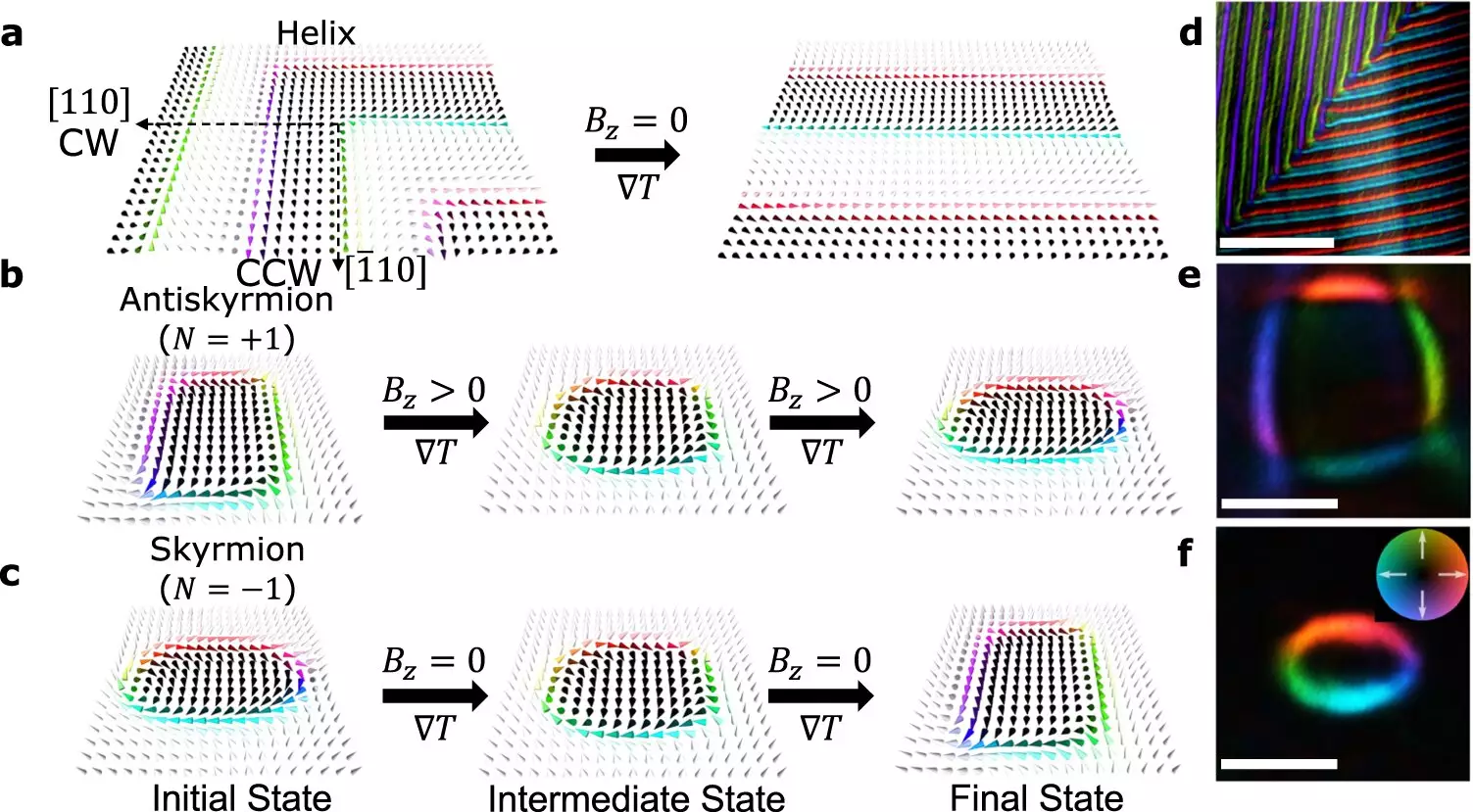In a groundbreaking experiment, researchers from RIKEN and their collaborators have successfully achieved transformations between spin textures, known as skyrmions and antiskyrmions, using heat and magnetic fields. This significant development opens doors for the creation of spintronics devices with low energy consumption. In this article, we will delve into the details of this experiment and explore its potential implications for next-generation memory devices.
Spintronics, a field that focuses on utilizing the spin of electrons in materials, has gained considerable attention due to its potential for revolutionizing memory devices. Skyrmions and antiskyrmions are specific spin textures that hold promise for encoding binary information. Skyrmions can represent a “1” bit, while antiskyrmions can signify a “0” bit.
Previous research has demonstrated the ability to manipulate and transform spin textures using electric current. However, this approach is not without its limitations, as it relies on electrical power and produces waste heat. Driven by the desire to find an energy-efficient alternative, the researchers at RIKEN explored the possibility of creating transformations between skyrmions and antiskyrmions using heat gradients.
To conduct the experiment, the researchers utilized a focused-ion beam to create a microdevice from a bulk single crystal magnet. This magnet consisted of iron, nickel, palladium, and phosphorus atoms. The team employed Lorentz scanning microscopy, a powerful technique for examining magnetic properties at small scales, to analyze the effects of heat and magnetic fields on the spin textures.
Surprisingly, when a temperature gradient and magnetic field were simultaneously applied to the crystal at room temperature, the antiskyrmions transformed into non-topological bubbles. These bubbles acted as a transitional state between skyrmions and antiskyrmions. As the temperature gradient was further increased, the non-topological bubbles transformed into stable skyrmions. Notably, the skyrmions remained in this configuration, even after the thermal gradient was removed.
While the findings above were consistent with the researchers’ expectations, they also made another unexpected observation. When the magnetic field was not applied, a thermal gradient caused the skyrmions to transform into antiskyrmions, which also maintained stability within the material. This revelation highlights the potential of harnessing waste heat to induce transformations between different spin textures.
The ability to exploit thermal gradients, or waste heat, as a driving force for transforming spin textures is a significant step forward. This breakthrough implies the possibility of developing nonvolatile memory devices that rely on thermal control and waste heat. Utilizing such devices in everyday life could revolutionize the way we store and retrieve information.
The researchers involved in this experiment expressed their enthusiasm about the findings. They intend to continue their exploration of manipulating skyrmions and antiskyrmions, seeking more efficient methods of control. Their ultimate goal is to build thermospintronic and other spintronics devices that can be seamlessly integrated into everyday life.
The research conducted by RIKEN and their collaborators has taken spintronics to new heights. By leveraging heat gradients and magnetic fields, they have successfully achieved transformations between various spin textures. This breakthrough opens up immense possibilities for the development of energy-efficient memory devices that could shape our future. With further research and advancements, we can anticipate a new era in information storage and spintronics technology.


Leave a Reply